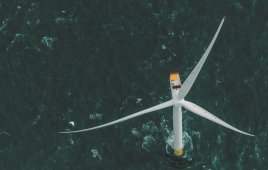The wind off the U.S. coasts could be used to generate more than double the combined electricity capacity of all the nation’s electric power plants, reports have suggested. But building wind turbines offshore is expensive, requiring parts to be transported at least 30 miles off land. Purdue University engineers are conducting research on a way…
Purdue University study predicts significant economic impact for states adding wind
Wind generates less greenhouse gas emission than burning fossil fuels and is claiming an increasing share of the energy production portfolio in the United States. But there are concerns about wind’s economic impact when compared to fossil fuels. A Purdue University study that models increased wind production in 10 states shows the significant economic impact…
Software allows designing a composite & analyzing structure its in at once
Manufacturers and engineering firms in the advanced-composites sector can now use software developed at Purdue University to reduce the design cycle of materials and structures, and analyze models too complex for existing methods. AnalySwift LLC, a commercial software developer, has launched SwiftComp, technology that provides efficient, high-fidelity modeling of composites and reduces analysis times without…
Blade sensors could let turbines adapt faster
Researchers have developed a technique that lets sensors monitor forces exerted on wind turbine blades, a step toward improving their efficiency by letting them adjust to rapidly changing wind conditions. The research by engineers at Purdue University and Sandia National Laboratories is part of an effort to develop a smarter wind turbine. “The goal is…




